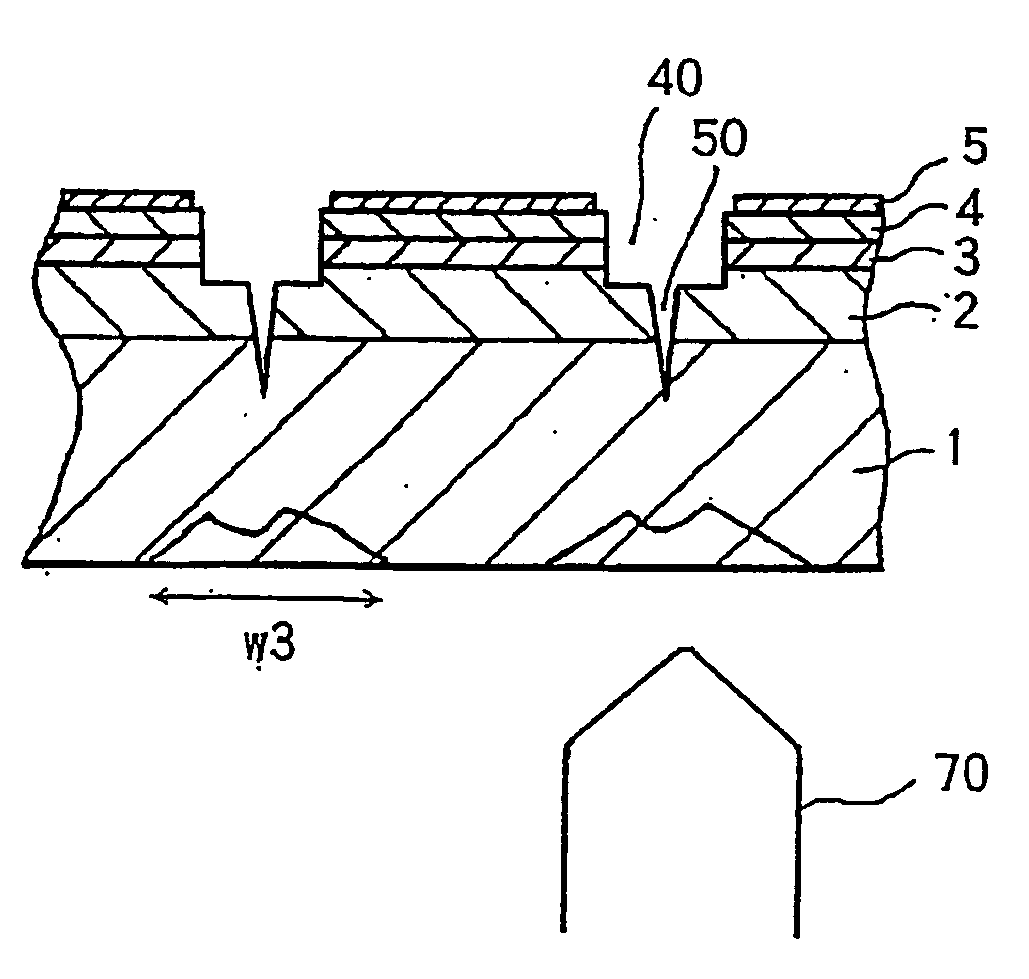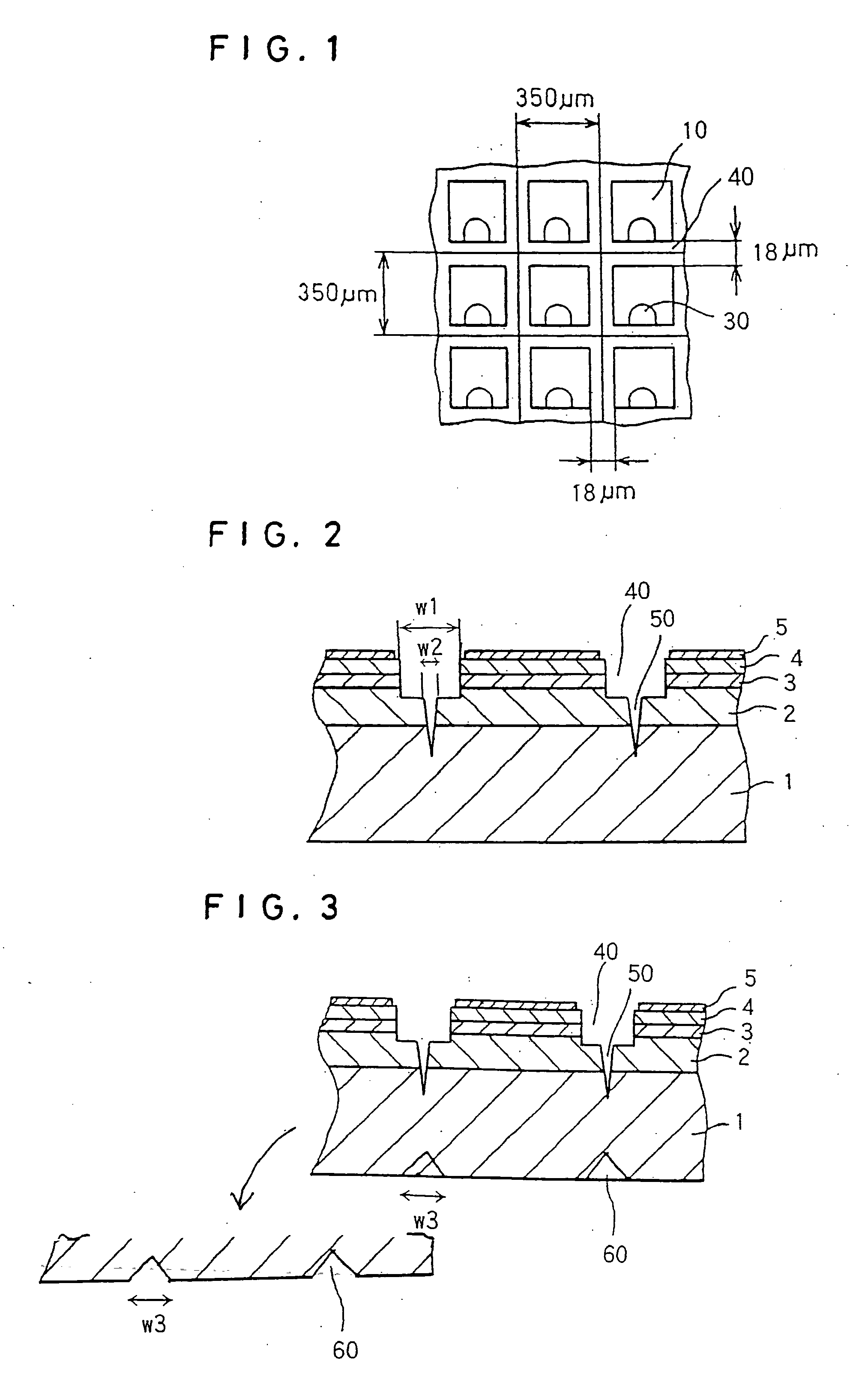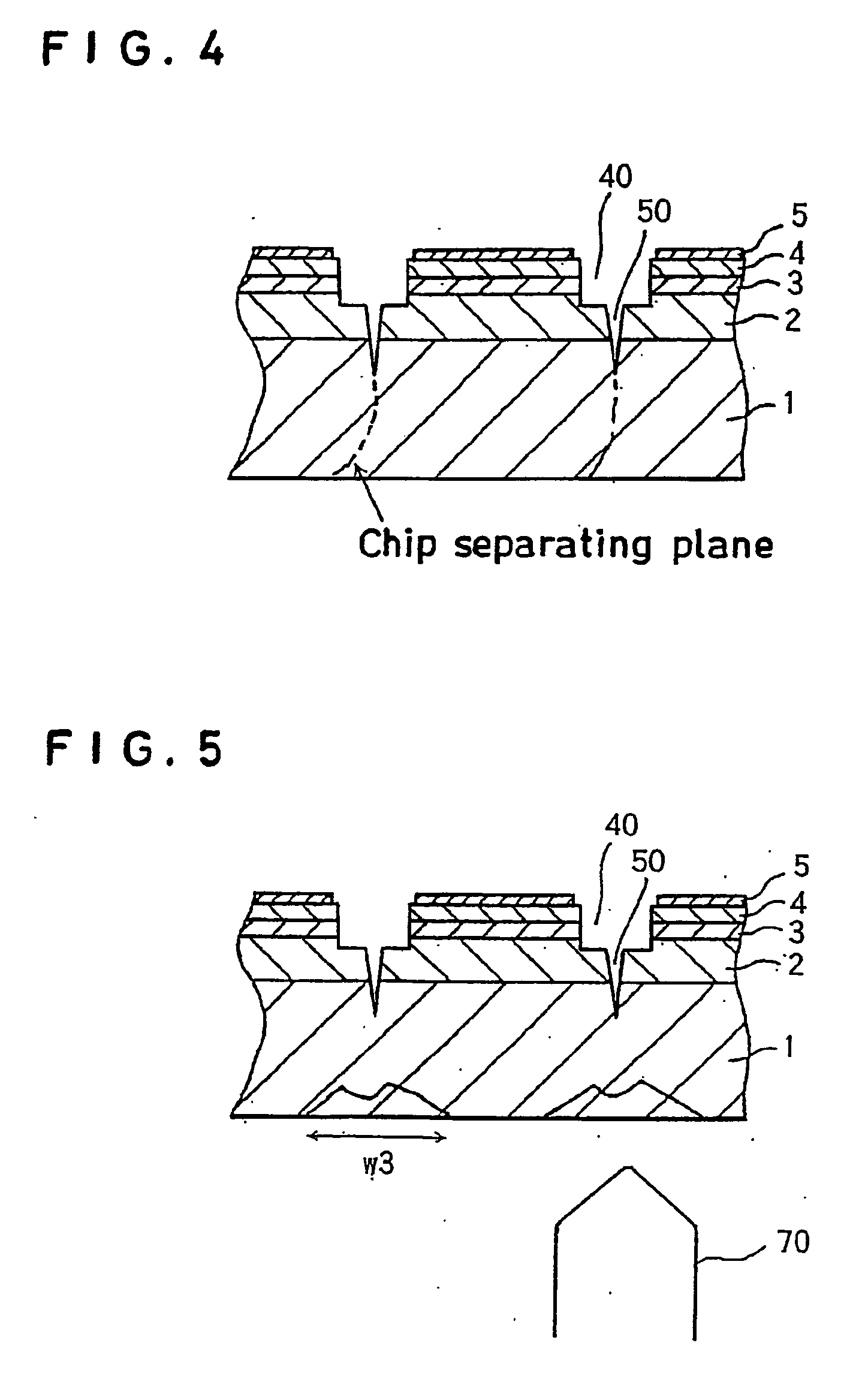Method for Fabrication of Semiconductor Light-Emitting Device and the Device Fabricated by the Method
a technology of light-emitting devices and manufacturing methods, which is applied in the manufacture of tools, laser beam welding apparatuses, welding/soldering/cutting articles, etc., can solve the problems of bringing the luminance of emission of led chips to a lower level, consuming a long time, and requiring only difficulty in materializing the processing done by the conventional method
- Summary
- Abstract
- Description
- Claims
- Application Information
AI Technical Summary
Benefits of technology
Problems solved by technology
Method used
Image
Examples
example 1
[0041]A blue light-emitting device formed of a nitride-based compound semiconductor was fabricated as follows.
[0042]On a sapphire substrate, an AlN layer, an under layer having a thickness of 4 μm and formed of undoped GaN, an n-side contact layer having a thickness of 2 μm and formed of Ge-doped (concentration 1×1019 / cm3) GaN, an n-side cladding layer having a thickness of 12.5 nm and formed of Si-doped (concentration 1×1018 / cm3) Ino.1Gao.9N, a barrier layer having a thickness of 16 nm and formed of GaN and a well layer having a thickness of 2.5 nm and formed of Ino.2Gao.8N are stacked alternatively up to five repetitions, and finally a light-emitting layer of a multiple quantum well structure provided with a barrier layer, a p-side cladding layer having a thickness of 2.5 nm and formed of Mg-doped (concentration 1×1020 / cm3) Alo.o7Gao.93N and a p-side contact layer having a thickness of 0.16 μm and formed of Mg-doped (concentration 8×1019 / cm3) Alo.02Gao.98N are sequentially stacked...
example 2
[0051]Nitride-based compound semiconductor light-emitting devices shaped like chips were fabricated by following the procedure of Example 1 while performing the dicing treatment subsequently to the laser processing for the purpose of forming third trenches having a width of 20 μm and a depth of 30 μm. During the formation of the third trenches, the laser beam was radiated so as to form the focal point at a position separated by about 30 μm from the substrate. After the irradiation with the laser beam was completed, the third trenches were shaped with a width of 20 μm and a depth of 15 μm. Subsequently, the third trenches were corrected in shape by the laser processing treatment using a diamond blade having a V-shaped edge as illustrated in FIG. 5 and a blade width of 20 μm. After the correction of the shape was completed, the third trenches were found to have a width of 20 μm and a depth of 30 μm. This wafer was divided to afford chips. The end faces of these chips were substantiall...
example 3
[0053]Nitride-based compound semiconductor light-emitting devices shaped like chips were fabricated by following the procedure of Example 1 while performing the laser processing treatment in two stages so as to form the third trenches having a width of 20 μm and a depth of 30 μm. In the laser processing of the first stage, the laser was radiated so as to form the focal point thereof at a position separated by about 30 μm from the substrate. The third trenches after the radiation of the laser beam had a width of 20 μm and a depth of 15 μm and assumed a W-latter cross section which resulted from the upward swell of the approximately central portions of the bottom parts thereof. The radiation of the laser beam in the second stage was performed with the focal point directed toward the approximate center of the W-letter cross section. The completed third trenches measured 20 μm in width and 35 μm in depth and assumed a nearly V-shaped groove, though slightly distorted as compared with th...
PUM
| Property | Measurement | Unit |
|---|---|---|
| Thickness | aaaaa | aaaaa |
| Electrical conductor | aaaaa | aaaaa |
| Width | aaaaa | aaaaa |
Abstract
Description
Claims
Application Information
 Login to View More
Login to View More - R&D
- Intellectual Property
- Life Sciences
- Materials
- Tech Scout
- Unparalleled Data Quality
- Higher Quality Content
- 60% Fewer Hallucinations
Browse by: Latest US Patents, China's latest patents, Technical Efficacy Thesaurus, Application Domain, Technology Topic, Popular Technical Reports.
© 2025 PatSnap. All rights reserved.Legal|Privacy policy|Modern Slavery Act Transparency Statement|Sitemap|About US| Contact US: help@patsnap.com



